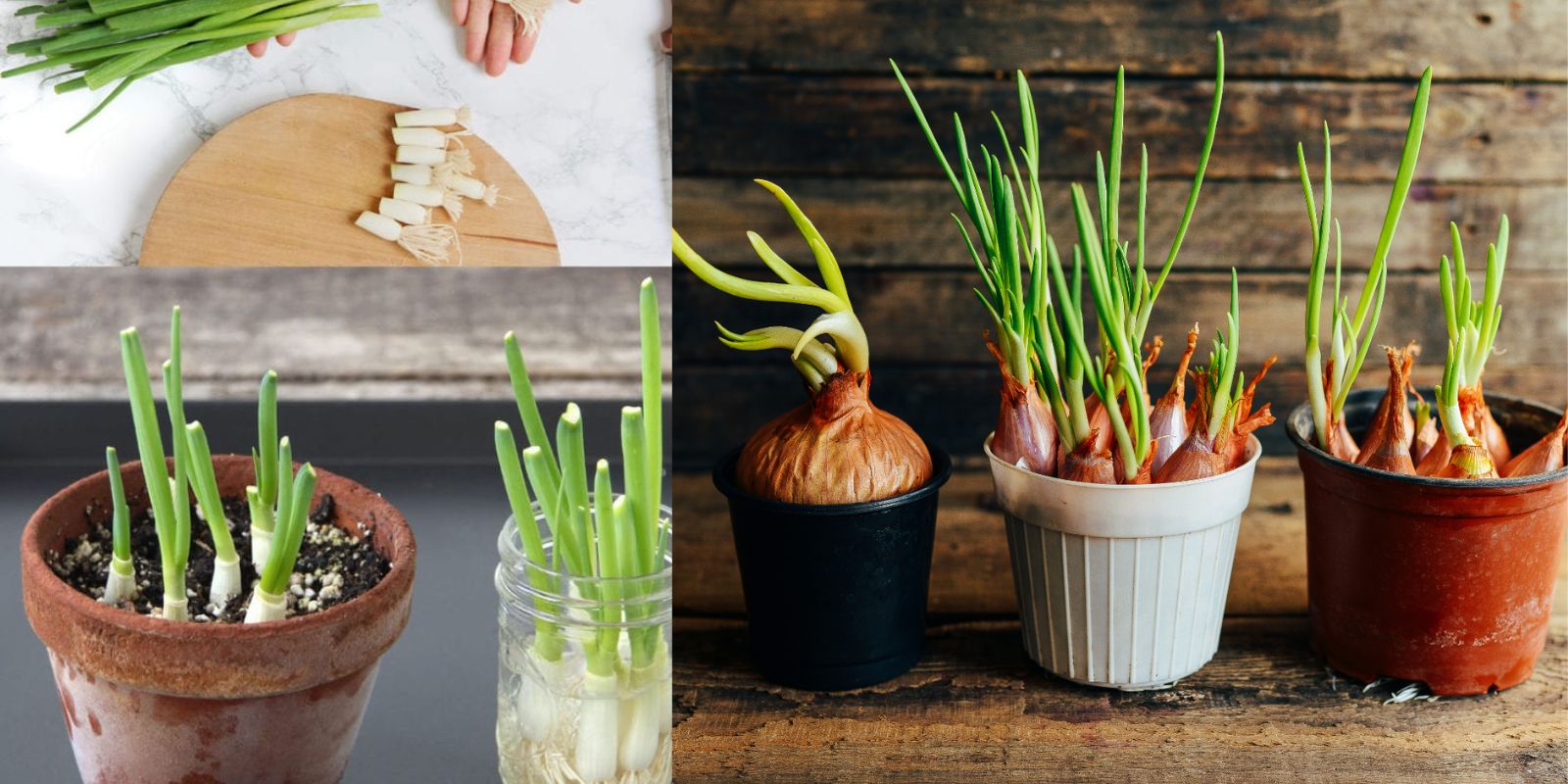Introduction
Green onions, also known as scallions, are one of the easiest vegetables to grow at home, especially when you use kitchen scraps. Instead of throwing away the root ends, you can regrow them effortlessly. This sustainable gardening hack not only saves money but also ensures a continuous supply of fresh, homegrown onions for your kitchen. Whether you’re a seasoned gardener or just starting, growing green onions from scraps is a fun and eco-friendly project that requires minimal effort and resources.
In this guide, we’ll dive into a step-by-step process to help you successfully grow green onions from scraps, tips for maintaining them, and the benefits of this simple yet rewarding gardening technique.
Why Grow Green Onions from Scraps?
- Cost-Effective: Save money by regrowing green onions instead of buying new ones each week.
- Sustainable: Reduce kitchen waste and embrace zero-waste gardening.
- Convenient: You’ll have fresh green onions at your fingertips whenever you need them.
- Easy and Quick: Perfect for beginners and busy gardeners, as it requires little time and attention.
What You’ll Need
- Green onion scraps (root ends with about 1–2 inches of white bulb)
- A small glass or jar
- Clean water
- Optional: A pot with soil or a garden bed
Step-by-Step Guide to Growing Green Onions from Scraps
Step 1: Save the Roots
After using the green tops of the onions for your meals, don’t toss the bottom part. Leave about 1–2 inches of the white bulb with the roots intact. These root ends are the starting point for regrowth.
Step 2: Prepare a Water Jar
Fill a small glass or jar with clean water. Make sure the water level is high enough to cover the roots but does not submerge the entire bulb.
Step 3: Place the Scraps in Water
Place the green onion roots into the water, ensuring the roots are fully submerged while the bulb sits above the waterline.
Step 4: Find a Sunny Spot
Position the jar on a sunny windowsill or any location that receives ample natural light. Sunlight is crucial for the regrowth process, as it helps the green shoots grow quickly.
Step 5: Maintain the Water
Change the water every 2–3 days to prevent stagnation and keep it fresh. This ensures that the roots remain healthy and free from rot.
Step 6: Observe Growth
Within just a few days, you’ll notice new green shoots emerging from the top of the bulbs. The growth rate may vary depending on the light and temperature, but green onions typically grow quite fast.
Step 7: Optional – Transplant to Soil
Once the green shoots reach about 4–6 inches in height, you can transplant the green onions into soil for prolonged growth. Choose a pot with good drainage or plant them directly in your garden. Cover the roots and the base of the bulb with soil, leaving the green tops exposed.
Step 8: Water and Care
Water the soil regularly to keep it moist, but avoid overwatering, as it can cause root rot. Green onions are hardy plants and don’t require much care.
Step 9: Harvest and Regrow Again
When the green tops are fully grown, snip off what you need, leaving the base and roots intact. This allows the plant to continue regrowing, providing you with a steady supply of green onions.
Tips for Success
- Choose Healthy Scraps: Make sure the green onion roots you save are healthy and firm. Discard any scraps that appear slimy or damaged.
- Provide Enough Light: Green onions thrive in bright, indirect sunlight. If growing indoors, ensure they receive at least 6–8 hours of sunlight daily.
- Avoid Overcrowding: If regrowing multiple green onions in one jar, leave enough space between them to prevent overcrowding and ensure proper root growth.
- Use Fertilizer (Optional): If transplanting to soil, you can use a mild organic fertilizer to encourage robust growth.
- Rotate the Jar: If your onions are leaning toward the light source, rotate the jar every couple of days to encourage even growth.
Benefits of Growing Green Onions from Scraps
- Reduces Food Waste: Instead of discarding green onion scraps, you’re repurposing them to grow new plants.
- Freshness: Homegrown green onions are fresher and more flavorful than store-bought ones.
- Eco-Friendly: This method supports sustainable gardening practices and reduces your environmental footprint.
- Educational: It’s a fantastic way to teach kids about plant growth and sustainability.
- Decorative: A jar of green onion scraps on your windowsill adds a touch of greenery to your home.
Common Questions About Growing Green Onions from Scraps
1. How many times can green onions regrow?
Green onions can regrow multiple times from the same bulb, though the regrowth may become weaker over time. Replacing older bulbs with new scraps ensures a steady supply.
2. Can I grow green onions without soil?
Yes, green onions can grow indefinitely in water, though transplanting them to soil often results in healthier and longer-lasting plants.
3. How long does it take for green onions to regrow?
New green shoots typically emerge within 3–5 days, and you can harvest them within 7–14 days, depending on the growing conditions.
4. Can I grow green onions outdoors?
Absolutely! Once the weather is warm enough, you can transplant your green onions to a garden bed or container outdoors. They thrive in full sun and well-draining soil.
Conclusion
Growing green onions from scraps is a simple and rewarding gardening project that anyone can try. It’s a fantastic way to reduce kitchen waste, save money, and enjoy the satisfaction of growing your own food. With just a jar of water and a sunny spot, you can have a continuous supply of fresh green onions at your fingertips.
Engage with us! Have you tried regrowing green onions from scraps? Share your tips and experiences in the comments below! 🌿
#GrowGreenOnions #KitchenGardening #ZeroWasteLiving #SustainableGardening #HomeGardenHacks #RegrowVeggies #UrbanGardening #GardeningTips

